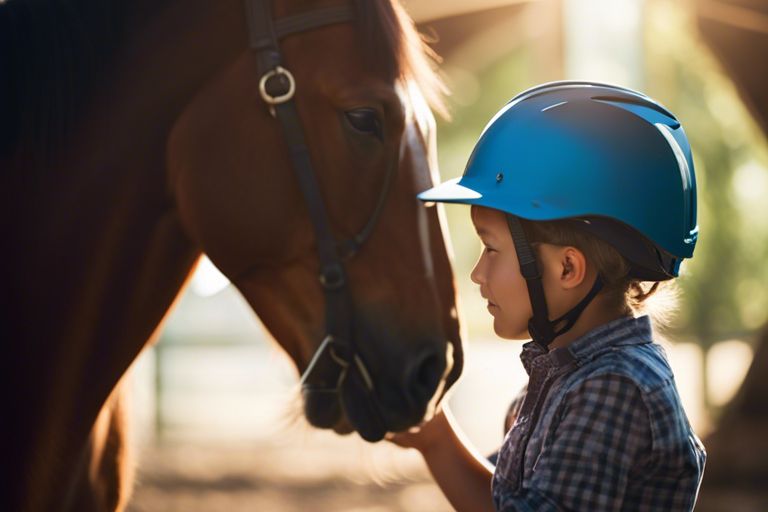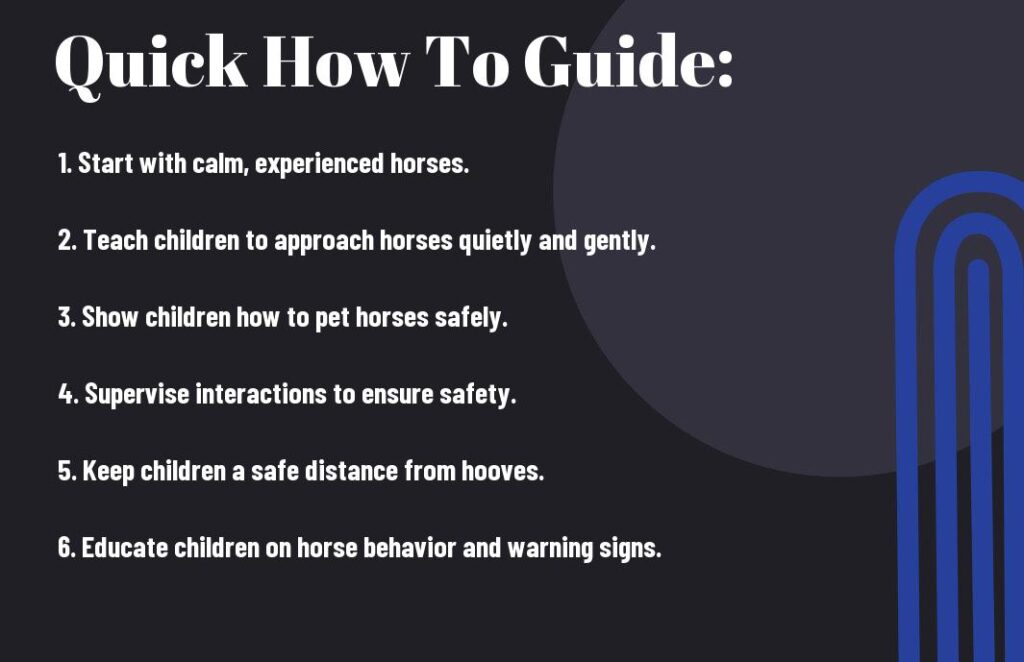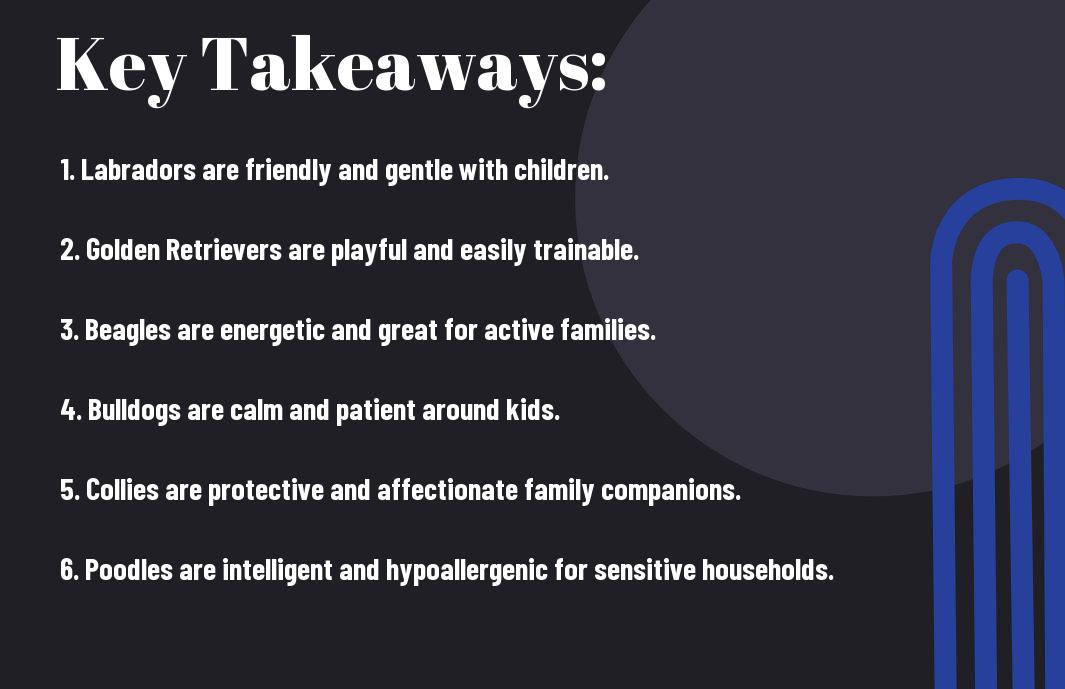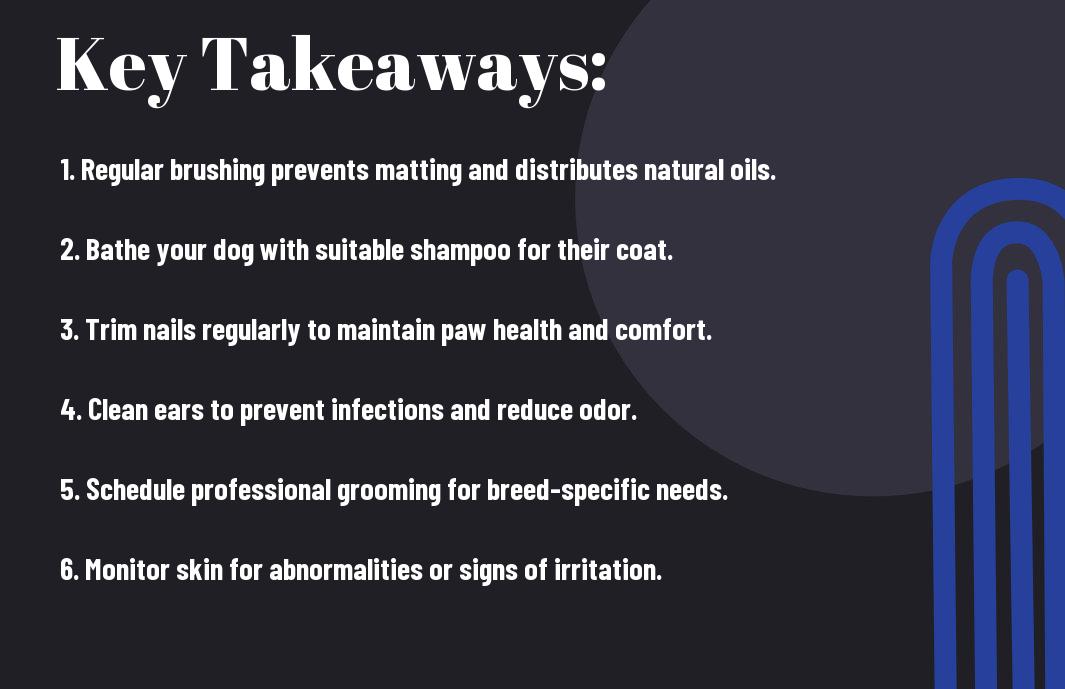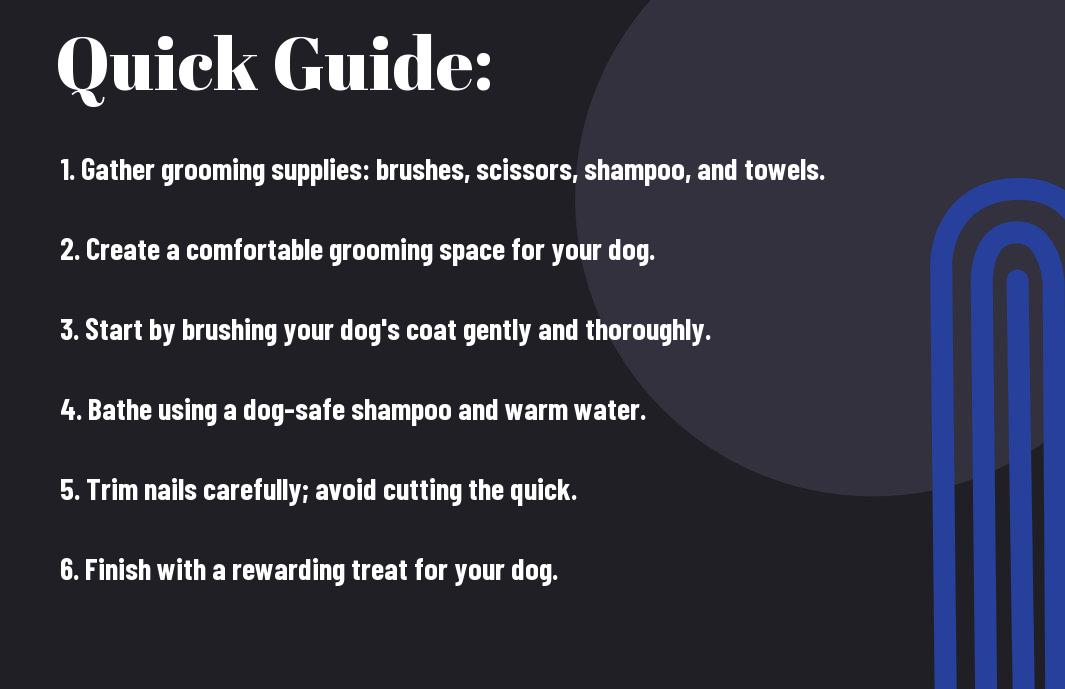Just imagine the joy of introducing your child to the wonderful world of horses, but equally important is teaching them how to stay safe around these powerful animals. From approaching a horse to riding and grooming, ensuring your kids understand horse safety is crucial. In this guide, we will walk you through important tips and practices to help your child develop a healthy respect for horses while safely enjoying their time with these majestic creatures.
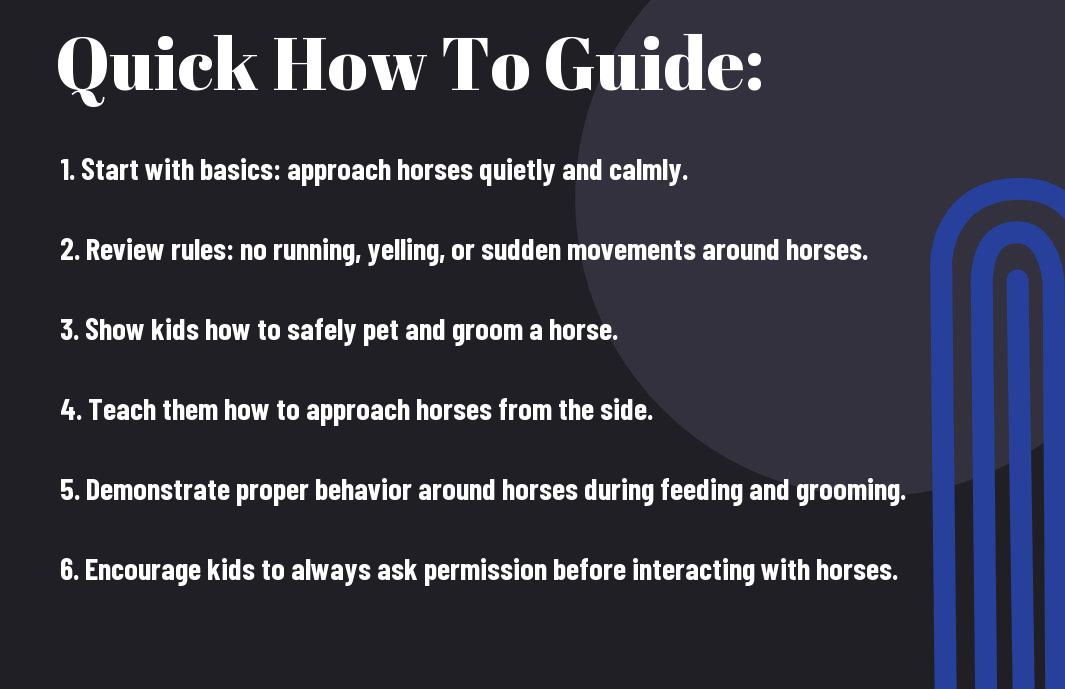
Understanding Horse Behavior and Body Language
While teaching kids horse safety, it is important to understand horse behavior and body language. This knowledge will help you and your children stay safe around horses and build a positive relationship with them.
Recognizing Horse Temperaments
Horse temperaments can vary greatly from one horse to another. Some horses may be calm and gentle, while others can be more high-strung and easily spooked. It is crucial to teach your children how to recognize and respect the different temperaments of horses they may encounter.
Identifying Horse Communication Methods
Temperaments play a significant role in how horses communicate. By understanding the temperament of a horse, you can better interpret its communication methods. It is important to teach your kids that horses use body language, vocalizations, and subtle cues to express their emotions and intentions.
It is crucial for children to learn how to interpret these signals correctly to avoid dangerous situations and build trust with the horse.
Teaching Kids to Read Horse Cues
Horse cues are subtle signals that horses use to communicate their feelings and intentions. By teaching your children how to read these cues, you can help them understand and respond appropriately to the horse’s behavior. Remember to emphasize the importance of paying attention to the horse’s body language and reacting calmly to avoid startling the horse.
Read the horse’s cues carefully, and always approach them calmly and with respect to ensure a positive interaction for both your children and the horse.
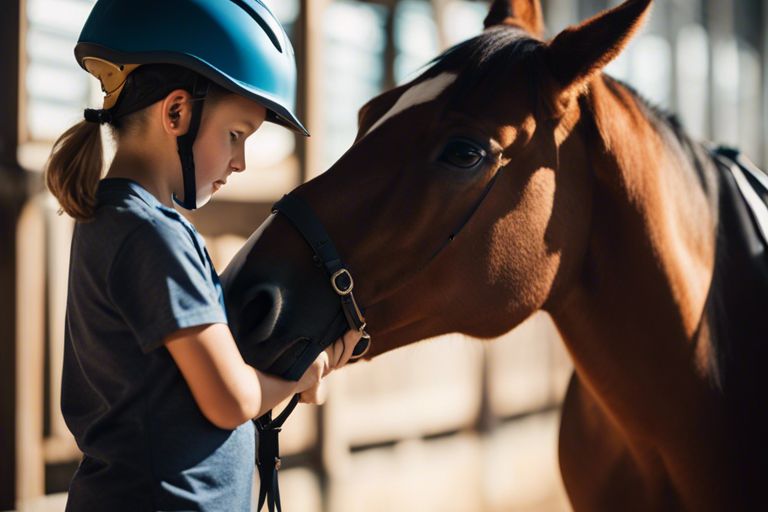
Essential Horse Safety Tips
The key to staying safe around horses is to understand and follow necessary horse safety tips. By familiarizing yourself with these guidelines, you can reduce the risk of accidents and ensure a safe and enjoyable experience with these magnificent animals.
Approaching Horses Safely
The first step in interacting with a horse is approaching them safely. Remember to always approach a horse from the front and speak to them softly to let them know you are there. Avoid sudden movements or loud noises that may startle the horse. When you are near the horse, make sure they can see you by touching them on the shoulder or neck. It’s also crucial to pay attention to the horse’s body language, as this can give you clues about their mood and how they may react.
Handling Horses with Care
While handling a horse, it is necessary to treat them with respect and care. Always approach them calmly and confidently, as horses can sense fear or uncertainty. When grooming or tacking up a horse, make sure to be gentle yet firm in your actions. Avoid startling the horse with sudden movements or loud noises, as this can lead to a dangerous situation. Additionally, be mindful of the horse’s personal space and do not stand directly behind them where you may get kicked.
Mounting and Dismounting Techniques
Safely mounting and dismounting a horse is crucial for both your safety and the horse’s comfort. When mounting, always check that your stirrups are properly adjusted and secure. Use a mounting block if the horse is tall to prevent any strain on their back. To dismount, always slide down carefully and land softly on the ground to avoid jarring the horse’s back. Keep in mind, maintaining control and balance during these movements is necessary to prevent accidents.
Riding Safety Essentials
Carefully following riding safety necessarys is critical to ensure a safe and enjoyable ride. Always wear a properly fitted helmet to protect your head in case of a fall. Make sure your tack is in good condition and fits the horse correctly to avoid any accidents due to equipment failure. Additionally, it’s important to ride in a controlled and aware manner, keeping a safe distance from other horses and obstacles. By prioritizing safety during your ride, you can minimize risks and focus on enjoying your time with these amazing animals.
Factors to Consider When Teaching Horse Safety
Your child’s safety around horses is paramount. When teaching horse safety, there are several factors to consider to ensure a positive and safe experience for everyone involved. Recognizing these factors can help you tailor your teaching approach to suit your child’s needs and abilities.
Age and Maturity of the Child
When teaching horse safety, it’s crucial to take into account your child’s age and level of maturity. Younger children may not fully grasp the potential dangers posed by horses, while older children may be more aware but still lack the judgment to make sound decisions in all situations. Recognizing your child’s developmental stage can help you adjust your teaching methods to ensure they understand and respect the responsibility that comes with interacting with horses.
Previous Horse Experience
Some children may have had previous horse experience either through lessons, pony rides, or family members who own horses. Consider your child’s familiarity with horses and their comfort level around these animals. Children with little to no previous experience may need more guidance and supervision compared to those who are more familiar with horses. Additionally, past negative experiences can impact your child’s confidence and trust around horses, so it’s crucial to address any fears or reservations they may have before progressing with teaching horse safety.
Consider enrolling your child in introductory horseback riding lessons to build their confidence and skills in a controlled environment. This can help them develop a strong foundation in horse safety practices and proper riding techniques under the supervision of experienced instructors.
Physical Ability and Strength
Even if your child is eager to learn about horses, it’s important to assess their physical ability and strength before allowing them to participate in activities such as riding or leading a horse. Horseback riding requires a certain level of physical coordination and core strength to maintain balance and control while on the horse. Make sure your child is physically capable of handling the physical demands that come with interacting with horses to prevent accidents or injuries.
The size and temperament of the horse should also be taken into consideration when assessing your child’s physical ability. Smaller or gentler horses may be more suitable for younger or less experienced children, while larger or more spirited horses may require a higher level of physical strength and skill to handle safely.
Emotional Maturity and Fear Factor
The emotional maturity and fear factor of your child can greatly influence their ability to learn and practice horse safety. Some children may be naturally more cautious or anxious around animals, especially large ones like horses. It’s important to address any fears or anxieties your child may have before introducing them to horses to help build their confidence and trust in these animals.
This can be done through gradual exposure and positive reinforcement, allowing your child to acclimate to the presence of horses at their own pace. Encouraging open communication and providing a supportive environment can help your child overcome any fears or uncertainties they may have about interacting with horses.
How to Create a Safe Horse Environment
Unlike other pets, horses require a specialized environment to ensure their safety and the safety of those around them. Creating a safe horse environment involves a combination of stable maintenance, proper fencing, equipment upkeep, and emergency preparedness.
Stable and Arena Safety Precautions
On your property, it’s crucial to keep the stables and arena areas safe for both horses and humans. **Regularly inspect the stable structure for any signs of wear or damage such as loose boards, exposed nails, or protruding objects that could injure a horse.** The flooring in the stable should be non-slip to prevent accidents. Make sure that all equipment is stored properly and out of reach of curious hands or mouths.
Fencing and Enclosure Considerations
Precautions need to be taken to ensure that your horse stays within the designated area and is protected from external threats. **Fencing should be sturdy, without any sharp edges, and tall enough to prevent the horse from jumping over.** Regularly check the perimeter for any holes or gaps that could allow the horse to escape or injure itself.
For instance, **electrical fencing can be effective, but it should be used with caution and only after proper training.** Make sure all gates are secure and functioning correctly to prevent accidental escapes.
Equipment Inspection and Maintenance
Safe horse handling also involves regularly inspecting and maintaining your equipment. **Ensure that all saddles, bridles, and other tack items are in good condition and fit properly.** Check for any fraying straps, loose buckles, or worn leather that could break while riding and cause an accident.
Emergency Preparedness Planning
Stable emergencies can happen, so it’s important to have a plan in place. **Make sure you have a first aid kit on hand that is stocked with supplies needed for both human and equine emergencies.** Know who to contact in case of an emergency, whether it’s the vet, farrier, or local authorities. **Regularly practice emergency drills with everyone who interacts with the horses on your property so that everyone knows their role in an emergency situation.**
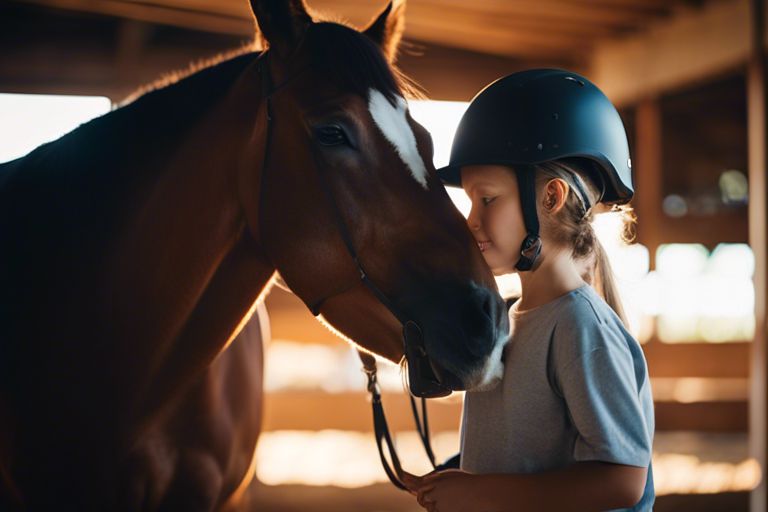
Teaching Horse Safety Through Practice and Demonstration
Hands-on Learning Exercises
For hands-on learning exercises, you can set up scenarios where you practice leading a horse safely, grooming a horse, or properly tacking up a horse. You can also practice mounting and dismounting correctly to emphasize the importance of balance and control. These exercises will help you become more comfortable and confident around horses.
Demonstrating Safety Procedures
To ensure you understand the importance of safety procedures, have an experienced horse handler demonstrate the correct way to approach, lead, groom, and tack up a horse. **Even** better, they can show you how to recognize warning signs of a horse becoming agitated or uncomfortable. By observing these demonstrations, you will learn valuable safety tips and protocols.
**Even** watching someone else groom a horse or tack up can provide valuable insights into the proper techniques and precautions to take. Observing demonstrations from experienced handlers can help you understand the potential risks and safety measures involved in horse care.
Role-Playing Emergency Scenarios
Handson the trainer can create role-playing scenarios where you practice responding to emergencies such as a loose horse, a horse spooking, or a rider falling off. **To** simulate these situations, you can practice emergency dismounts, leading a horse to safety, or calling for help. These exercises will help you react calmly and swiftly in real-life emergencies.
To further enhance your understanding of how to handle emergencies, the trainer can introduce unexpected elements during the role-playing scenarios. By practicing in various challenging situations, you will be better prepared to handle unexpected events when working with horses.
Encouraging Active Participation
**A** great way to encourage active participation in horse safety is by involving you in barn chores and horse care tasks. This hands-on experience will help you understand the daily responsibilities involved in caring for horses and reinforce the importance of safety measures. **You** can assist with feeding, mucking out stalls, and grooming under supervision to develop good habits and safety awareness.
**Even** participating in simple tasks like leading a horse safely from the paddock to the stable or cleaning hooves can build your confidence and competence around horses. Active participation in horse care activities will deepen your understanding of safety protocols and ensure you develop a respectful relationship with these magnificent animals.
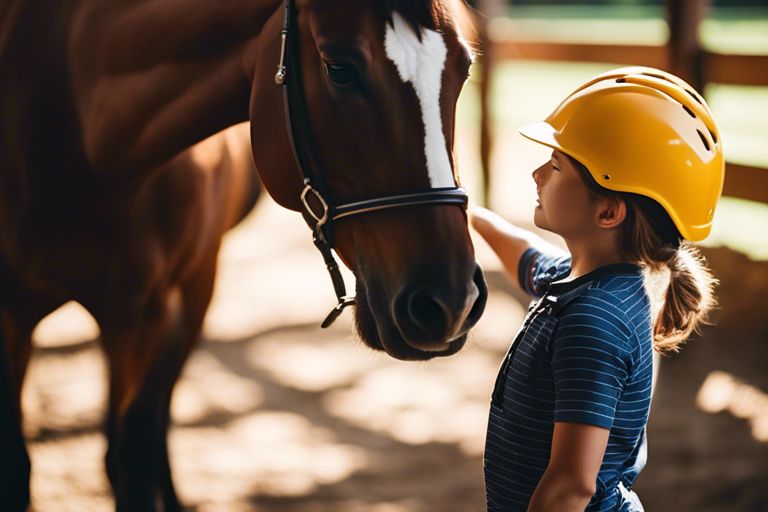
Reinforcing Horse Safety Habits
Establishing Routine Safety Checks
Keep horse safety at the top of your mind by establishing routine safety checks before and after working with your horse. This can include inspecting the horse’s equipment, such as the saddle, bridle, and reins, to ensure everything is in good condition and properly fitted before each ride. After riding, make it a habit to check your horse for any signs of injury or discomfort.
Encouraging Responsible Horse Ownership
Routine care and responsible horse ownership go hand in hand when it comes to safety. Horse ownership involves not only riding but also maintaining the horse’s living space, feeding schedule, and healthcare needs. By involving your child in the day-to-day care of the horse, you are instilling the importance of responsible ownership and creating a bond based on trust and respect.
Horse ownership requires a long-term commitment, and by involving your child in the care of the horse, you are teaching them valuable life skills such as empathy, responsibility, and dedication. This hands-on experience will also help your child understand the significance of building a strong and trusting relationship with their horse.
Providing Ongoing Education and Training
With horse safety, education is key. With ongoing education and training, you can reinforce proper safety practices and help your child develop a deeper understanding of horse behavior and communication. Consider enrolling your child in riding lessons or horse care workshops to expand their knowledge and skills.
Safety should always be a top priority when working with horses. Through ongoing education and training, you can empower your child with the knowledge and confidence needed to handle horses safely and responsibly. Note, learning about horses is a lifelong journey, and there is always something new to discover and understand.
Positive Reinforcement Techniques
Some behaviors can be encouraged through positive reinforcement, such as rewarding your child when they demonstrate good horse safety habits. Education is important in helping your child understand why these safety practices are crucial and how their actions can impact the horse’s well-being. By praising and rewarding them for responsible behavior, you are reinforcing positive habits that will stick with them for years to come.
Conclusion
As a reminder, teaching kids about horse safety is crucial in ensuring their well-being around these beautiful animals. By following the tips mentioned in this guide, you can help instill good habits and practices that will keep your child safe while interacting with horses. Bear in mind, supervision, education, and setting clear boundaries are key to fostering a safe and enjoyable experience for both the child and the horse.
Always prioritize safety when introducing kids to horses, and encourage open communication about any concerns or questions they may have. By being proactive and consistent in teaching horse safety, you can help your child build a strong foundation of respect and understanding for these magnificent creatures.
Q: Why is teaching kids horse safety important?
A: It is important to teach kids horse safety to prevent accidents and injuries while interacting with horses. By educating children about how to safely approach, handle, and ride horses, we can help them develop a respectful and responsible attitude towards these animals.
Q: What are some basic horse safety rules that kids should follow?
A: Some basic horse safety rules for kids include always approaching a horse from the front, speaking calmly and moving slowly around horses, wearing appropriate footwear around horses, and never standing directly behind a horse.
Q: How can I teach kids about reading a horse’s body language?
A: You can teach kids about reading a horse’s body language by explaining the different signs that indicate if a horse is feeling calm, anxious, scared, or aggressive. Show them examples of a horse’s posture, ear position, and facial expressions to help them understand how a horse is feeling.
Q: What should kids do if they feel scared or uncomfortable around a horse?
A: If a child feels scared or uncomfortable around a horse, they should speak up and seek help from a responsible adult. It is important to never force a child to interact with a horse if they are feeling uneasy, as this can lead to accidents or negative experiences.
How can I help kids understand the importance of wearing safety gear when riding horses?
A: You can help kids understand the importance of wearing safety gear when riding horses by explaining how helmets, boots, and other protective equipment can prevent serious injuries in case of falls or accidents. Encouraging them to always wear the necessary safety gear can help instill a habit of prioritizing their well-being while riding horses.
